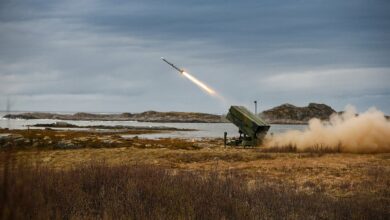Air-surface defense refers to the military capabilities and strategies employed to protect a nation's territory, assets, and personnel from aerial and surface threats. This encompasses a wide range of systems and tactics designed to counter airborne threats such as aircraft, missiles, drones, and helicopters, as well as surface threats like artillery, tanks, and naval vessels.
Here's a breakdown of how air-surface defense typically works:
1. Detection: The first step in air-surface defense is detecting incoming threats. This is accomplished through a variety of sensor systems including radar, sonar, electro-optical systems, and intelligence gathering platforms. These sensors constantly scan the airspace and surface areas for potential threats.
2. Identification: Once a potential threat is detected, it must be identified to determine its nature and intent. This is often done using a combination of radar signatures, visual confirmation, and electronic intelligence. Identifying the threat allows commanders to assess the level of response required.
3. Engagement: After a threat is detected and identified, the next step is to engage and neutralize it. This can be done using a variety of defensive systems including surface-to-air missiles (SAMs), anti-aircraft guns, interceptor aircraft, naval vessels equipped with anti-aircraft missiles, and electronic warfare systems. The choice of weapon system depends on factors such as the range and altitude of the threat, its speed, and the available resources.
4. Interception: Intercepting and destroying or disabling the threat is the primary objective of air-surface defense. This may involve launching missiles to shoot down enemy aircraft or drones, engaging surface targets with artillery or anti-ship missiles, or using electronic warfare to disrupt enemy communications and guidance systems.
5. Countermeasures: In addition to engaging threats directly, air-surface defense also involves deploying countermeasures to protect friendly forces and assets. This can include tactics such as deploying decoys to confuse enemy sensors, jamming enemy communications and radar systems, and employing stealth technology to reduce the visibility of friendly aircraft and ships.
6. Coordination: Effective air-surface defense requires close coordination between different branches of the military including the air force, army, navy, and specialized units such as air defense artillery and electronic warfare units. Coordination ensures that resources are deployed effectively and that all threats are addressed in a timely manner.
Overall, air-surface defense is a complex and multi-faceted undertaking that requires a combination of advanced technology, rigorous training, and effective coordination to protect against the diverse range of airborne and surface threats faced by modern militaries.
For more explanation watch it now:










.jpeg)
0 Comments